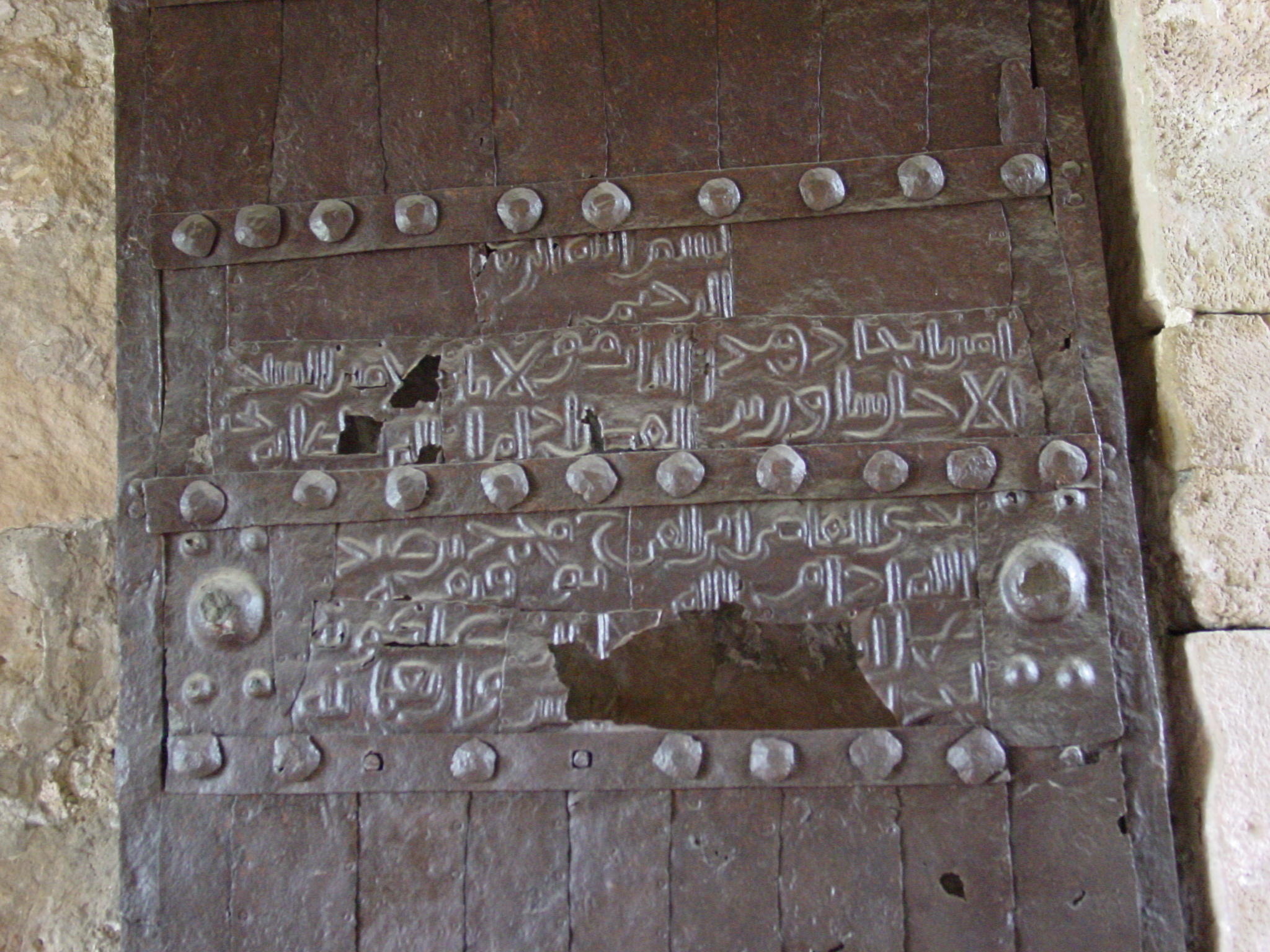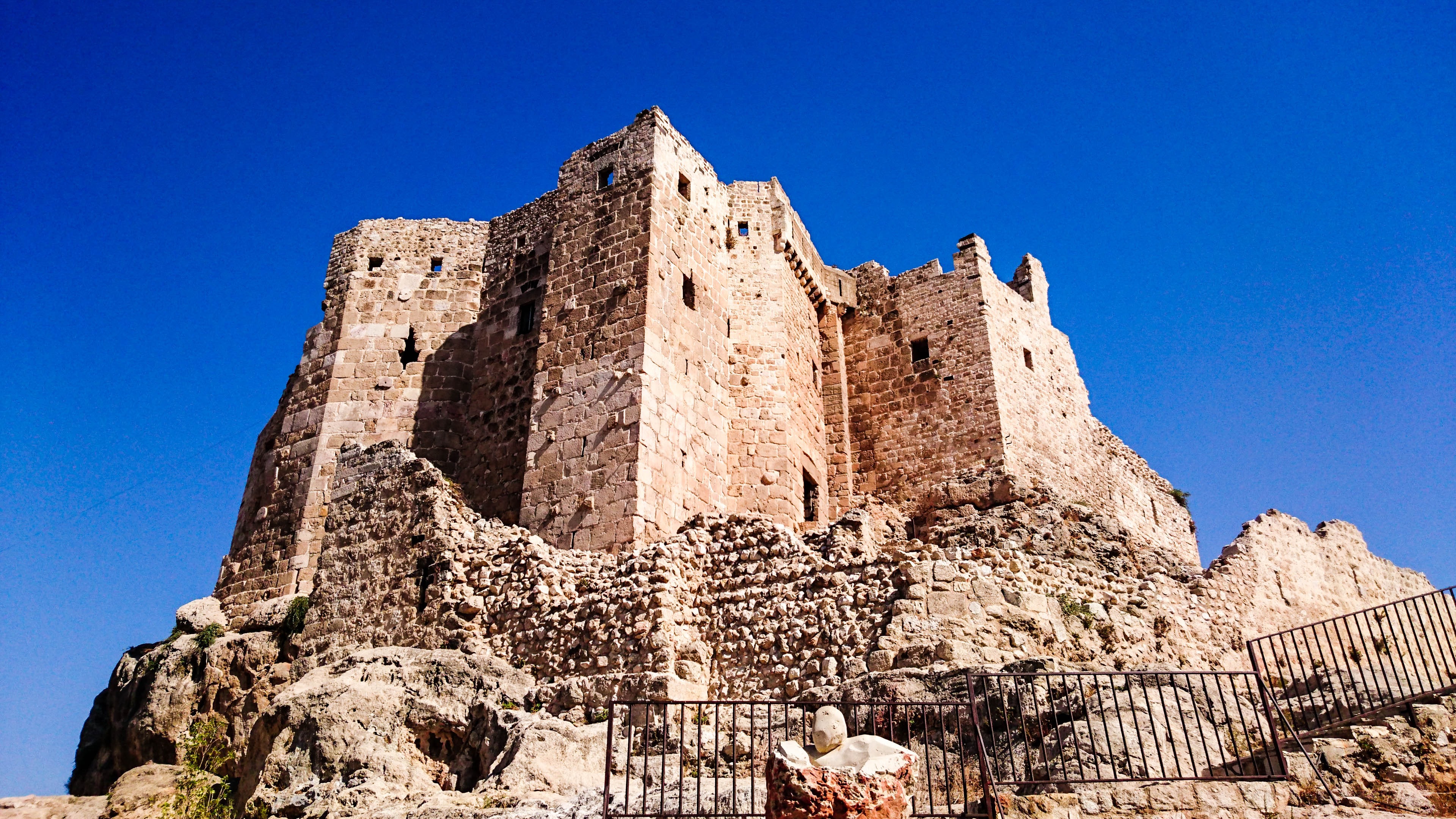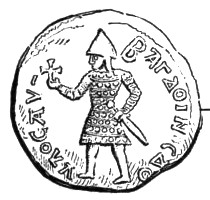|
Radwan Of Aleppo
Ridwan), though he is commonly referred to as ''Ridwan'' ( ar, رضوان), which is also romanised as ''Radwan'' or ''Rudwan''. ( – 10 December 1113) was a Seljuk emir of Aleppo from 1095 until his death. Ridwan was born to the Seljuk prince Tutush, who had established a principality in Syria after his brother, Sultan Malik-Shah I granted him the region and its adjacent areas as an appanage. After the death of Malik-Shah, Tutush claimed the Seljuk crown, but he was killed by the forces of his nephew Berkyaruq near Ray, Iran. Following this, Ridwan moved to Aleppo and proclaimed himself the new emir. His brother Duqaq's declaration of a new emirate in Damascus split the Syrian Seljuk state in two and started a rivalry between the brothers which continued even after the arrival of the First Crusade in 1097. Ridwan tried to banish the Crusaders with gold, and fought the Principality of Antioch, a Crusader state established after the end of the Siege of Antioch in 1098. ... [...More Info...] [...Related Items...] OR: [Wikipedia] [Google] [Baidu] |
List Of Rulers Of Aleppo
The rulers of Aleppo ruled as kings, emirs and sultans of the city and its surrounding region since the later half of the 3rd millennium BC, starting with the kings of Armi, followed by the Amorite dynasty of Yamhad. Muslim rule of the city ended with the Ayyubid dynasty which was ousted by the Mongol conquest in 1260. The rulers of Yamhad used the titles of king and Great King, while the Hittite dynasty monarchs used the titles of king and viceroy. The Emirate of Halab was established in 945 by the Hamdanid dynasty and lasted until 1086, when it became a sultanate under the Seljuq dynasty. The sultanate was sometimes ruled together with Damascus under the same sultan. The Artuqids rulers used the titles of Malik and emir, as did the Zengid rulers which added the title atabeg. The Ayyubid monarchs used the titles of sultan and malik. The dates for Yamhad and the Hittite Dynasties are proximate and calculated by the Middle chronology. Yamhad Dynasty Yamhad was the name of ... [...More Info...] [...Related Items...] OR: [Wikipedia] [Google] [Baidu] |
Siege Of Antioch
The siege of Antioch took place during the First Crusade in 1097 and 1098, on the crusaders' way to Jerusalem through Syria. Two sieges took place in succession. The first siege, by the crusaders against the city held by the Seljuk Empire, lasted from 20 October 1097 to 3 June 1098. The second siege, of the crusader-held city by a Seljuk relieving army, lasted three weeks in June 1098, leading to the Battle of Antioch in which the crusaders defeated the relieving army led by Kerbogha. The crusaders then established the Principality of Antioch, ruled by Bohemond of Taranto. Antioch (modern Antakya) lay in a strategic location on the crusaders' route to Palestine through the Syrian Coastal mountain range. Supplies, reinforcements and retreat could all be controlled by the city. Anticipating that it would be attacked, the Seljuk governor of the city, Yağısıyan, began stockpiling food and sending requests for help. The Byzantine walls surrounding the city presented a formidabl ... [...More Info...] [...Related Items...] OR: [Wikipedia] [Google] [Baidu] |
Ganja, Azerbaijan
Ganja (; az, Gəncə ) is Azerbaijan's third largest city, with a population of around 335,600.Azərbaycan Respublikası. — 2. Azərbaycan Respublikasının iqtisadi və inzibati rayonları. — 2.4. Azərbaycan Respublikasının iqtisadi və inzibati rayonlarının ərazisi, əhalisinin sayı və sıxlığı, səhifə 66. /Azərbaycanın əhalisi (statistik bülleten) Müəllifi: State Statistics Committee, Azərbaycan Respublikasının Dövlət Statistika Komitəsi. Buraxılışa məsul şəxs: Rza Allahverdiyev. Bakı — 2015, 134 səhifə. The city has been a historic and cultural center throughout most of its existence. It was the capital of the Ganja Khanate until 1804; after Qajar Iran ceded it to the Russian Empire following the Treaty of Gulistan in 1813, it became part of the administrative divisions of the Georgia Governorate, Georgia-Imeretia Governorate, Tiflis Governorate, and Elizavetpol Governorate. Following the dissolution of the Russian Empire and the Transc ... [...More Info...] [...Related Items...] OR: [Wikipedia] [Google] [Baidu] |
Seljuk Empire
The Great Seljuk Empire, or the Seljuk Empire was a high medieval, culturally Turco-Persian tradition, Turko-Persian, Sunni Islam, Sunni Muslim empire, founded and ruled by the Qiniq (tribe), Qïnïq branch of Oghuz Turks. It spanned a total area of from Anatolia and the Levant in the west to the Hindu Kush in the east, and from Central Asia in the north to the Persian Gulf in the south. The Seljuk Empire was founded in 1037 by Tughril (990–1063) and his brother Chaghri Beg, Chaghri (989–1060), both of whom co-ruled over its territories; there are indications that the Seljuk leadership otherwise functioned as a triumvirate and thus included Seljuk dynasty, Musa Yabghu, the uncle of the aforementioned two. From their homelands near the Aral Sea, the Seljuks advanced first into Greater Khorasan, Khorasan and into the Iranian plateau, Iranian mainland, where they would become largely based as a Persianate society. They then moved west to conquer Baghdad, filling up the power va ... [...More Info...] [...Related Items...] OR: [Wikipedia] [Google] [Baidu] |
Ilghazi
Najm ad-Din Ilghazi ibn Artuq (died November 8, 1122) was the Turkmen Artukid ruler of Mardin from 1107 to 1122. He was born into the Oghuz tribe of Döğer. Biography His father Artuk Bey was the founder of the Artukid dynasty, and had been appointed governor of Jerusalem by the Seljuq emir Tutush. When Artuk died, Ilghazi and his brother Sökmen succeeded him as governors of Jerusalem. In 1096, Ilghazi allied with Duqaq of Damascus and Yaghi-Siyan of Antioch against Radwan of Aleppo; Duqaq and Radwan were fighting for control of Syria after the death of Tutush. Ilghazi and Dukak eventually quarrelled and Ilghazi was imprisoned, leading to the capture of Jerusalem by his brother Sökmen, but Ilgazi recovered the city when he was released. He held it until the city was captured by the Fatimid vizier of Egypt, al-Afdal Shahanshah, in 1098. After this he sought to make a name for himself in the Jezirah, where his brothers had also established themselves. He then entered ... [...More Info...] [...Related Items...] OR: [Wikipedia] [Google] [Baidu] |
Lu'lu' Al-Yaya
Luʾluʾ al-Yaya, also called al-Bābā or al-Khādim ("the Eunuch"), was the regent of the Seljuk sultanate of Aleppo from AD 1113 ( AH 507) until his assassination in 1117 (510). He was the ''atabeg'' (father-lord) of the underage sultans. Previously, he had been a eunuch in the service of Aqsunqur al-Bursuqī, the ''atabeg'' of Mosul. According to Ibn al-Athīr, Luʾluʾ took charge of affairs in Aleppo after the death of Sultan Riḍwān in 1113, since his son, Alp Arslān al-Akhras, was only sixteen years old. In 1114, Alp Arslān was murdered in his own palace by his ''mamlūk''s at the instigation of Luʾluʾ because the young sultan had sought the help of Ṭughtakīn, ruler of Damascus, to establish his personal rule. Luʾluʾ then raised his six-year-old brother, Sulṭān Shāh ibn Riḍwān, to the throne and continued to hold the regency. In an effort to solidify his rule, he founded the first '' khānaqāh'' ( Ṣūfī monastery) in Aleppo, but this generated strong ... [...More Info...] [...Related Items...] OR: [Wikipedia] [Google] [Baidu] |
Janah Ad-Dawla
Janah ad-Dawla was the Seljuq emir of Homs during the First Crusade. He was the atabeg of Ridwan who took control of Aleppo after the death of Ridwan's father Tutush I in 1095. He later joined Kerbogha's army during the second siege of Antioch in 1098. He was murdered by three Assassins in 1103, apparently by order of al-Hakim al-Munajjim Al-Hakim al-Munajjim ( ar, الحكيم المنجم, literally "The Physician-Astrologer") (died 1103) was a Persian Nizari Isma'ili and the first Nizari missionary ('' da'i'') in Syria, belonging to the order of Assassins. Al-Hakim al-Munajji ... and apparently instigated by Ridwan.Lewis, Bernard (2003). ''The Assassins: A Radical Sect in Islam''. New York: Perseus Books Group., pg. 100 References {{reflist Emirs Rulers of Syria 11th-century monarchs in the Middle East Muslims of the First Crusade People of the Nizari–Seljuk wars Victims of the Order of Assassins ... [...More Info...] [...Related Items...] OR: [Wikipedia] [Google] [Baidu] |
Atabeg
Atabeg, Atabek, or Atabey is a hereditary title of nobility of Turkic origin, indicating a governor of a nation or province who was subordinate to a monarch and charged with raising the crown prince. The first instance of the title's use was with early Seljuk Turks who bestowed it on the Persian vizier Nizam al-Mulk It was later used in the Kingdom of Georgia, first within the Armeno-Georgian family of Mkhargrdzeli as a military title and then within the house of Jaqeli as princes of Samtskhe. Title origins and meanings The word ''atabeg'' is a compound of the Turkic word ''ata'', "ancestor", or "father" and the word ''beg'' or ''bey'', "lord, leader, prince". ''Beg'' is stated in some sources as being of Iranian origin (as in the compound Baghdad from ''bag/beg'' and ''dad'', "lord" given). However, according to Gerhard Doerfer, the word ''beg'' may have possibly been of Turkic origin – the origin of the word still remains disputed to this day. The title ''Atabeg'' was co ... [...More Info...] [...Related Items...] OR: [Wikipedia] [Google] [Baidu] |
Order Of Assassins
The Order of Assassins or simply the Assassins ( fa, حَشّاشین, Ḥaššāšīn, ) were a Nizārī Ismāʿīlī order and sect of Shīʿa Islam that existed between 1090 and 1275 CE. During that time, they lived in the mountains of Persia and in Syria, and held a strict subterfuge policy throughout the Middle East through the covert murder of Muslim and Christian leaders who were considered enemies of the Nizārī Ismāʿīlī State. The modern term assassination is believed to stem from the tactics used by the Assassins. Nizārī Ismāʿīlīsm formed in the late 11th century after a succession crisis within the Fatimid Caliphate between Nizār ibn al-Mustanṣir and his half-brother, caliph al-Musta‘lī. Contemporaneous historians include Arabs ibn al-Qalanisi and Ali ibn al-Athir, and the Persian Ata-Malik Juvayni. The first two referred to the Assassins as ''batiniyya'', an epithet widely accepted by Ismāʿīlīs themselves. Overview The Nizari Isma'il ... [...More Info...] [...Related Items...] OR: [Wikipedia] [Google] [Baidu] |
Nizari Isma'ilism
The Nizaris ( ar, النزاريون, al-Nizāriyyūn, fa, نزاریان, Nezāriyān) are the largest segment of the Isma'ilism, Ismaili Muslims, who are the second-largest branch of Shia Islam after the Twelvers. Nizari teachings emphasize independent reasoning or ''ijtihad''; pluralism—the acceptance of racial, ethnic, cultural and inter-religious differences; and social justice. Nizaris, along with Twelvers, adhere to the Jaʽfari jurisprudence, Jaʽfari school of Fiqh, jurisprudence. The Aga Khan, currently Aga Khan IV, is the spiritual leader and Imamate in Nizari doctrine, Imam of the Nizaris. The global seat of the Ismaili Imamate is in Lisbon, Portugal. Early history Nizari Isma'ili history is often traced through the unbroken hereditary chain of guardianship, or ''walayah'', beginning with Ali, Ali Ibn Abi Talib, who was declared Muhammad, Muhammad's successor as Imam during the latter's Farewell Pilgrimage, final pilgrimage to Mecca, and continues in an unbroke ... [...More Info...] [...Related Items...] OR: [Wikipedia] [Google] [Baidu] |
Joscelin I, Count Of Edessa
Joscelin of Courtenay (or Joscelin I) (died 1131), Prince of Galilee and Lord of Turbessel (1115–1131) and Count of Edessa (1119–1131), ruled over the County of Edessa during its zenith, from 1118 to 1131. Captured twice, Joscelin continued to expand his county, even participating in the Battle of Azaz in 1125. Gravely injured during the collapse of a sapper mine, Joscelin marched his army to relieve the besieged fortress of Kaysun, and died soon after. Biography Joscelin was the son of Joscelin I, Lord of Courtenay, and Elizabeth, daughter of Guy I of Montlhéry. He arrived in the Holy Land during the Crusade of 1101, and entered first into the service of his cousin Count Baldwin II of Rethel (in the army of Godfrey of Bouillon), who invested him with the lordship of Turbessel. Later Joscelin would serve in the army of Stephen of Blois. In 1104, he was captured at the Battle of Harran. After passing into the hands of Ilghazi, ruler of Mardin, Joscelin was ransomed for 20, ... [...More Info...] [...Related Items...] OR: [Wikipedia] [Google] [Baidu] |
Baldwin II Of Jerusalem
Baldwin II, also known as Baldwin of Bourcq or Bourg (; – 21August 1131), was Count of Edessa from 1100 to 1118, and King of Jerusalem from 1118 until his death. He accompanied his cousins Godfrey of Bouillon and Baldwin of Boulogne to the Holy Land during the First Crusade. He succeeded Baldwin of Boulogne as the second count of Edessa when he left the county for Jerusalem following his brother's death. He was captured at the Battle of Harran in 1104. He was held first by Sökmen of Mardin, then by Jikirmish of Mosul, and finally by Jawali Saqawa. During his captivity, Tancred, the Crusader ruler of the Principality of Antioch, and Tancred's cousin, Richard of Salerno, governed Edessa as Baldwin's regents. Baldwin was ransomed by his cousin, Joscelin of Courtenay, lord of Turbessel, in the summer of 1108. Tancred attempted to retain Edessa, but Bernard of Valence, the Latin patriarch of Antioch, persuaded him to restore the county to Baldwin. Baldwin allied with Jawali, ... [...More Info...] [...Related Items...] OR: [Wikipedia] [Google] [Baidu] |





